Fighting moles in the garden: scaring away, baits, traps and traps
A mole is a small animal. His body is very smooth, and this helps him to move along the moves with the maximum speed possible for the animal. Moles feed on worms and various bugs, finding them in loose and fertile soil. They get in the way of growing vegetablesdigging their underground galleries. Gardeners will stand up like a mountain for their beautiful lands. Moles harm summer residents. That is why the latter are mercilessly exterminating them in all possible ways.
Content
- General information
- What harm do moles do
- We study the habits of the pest
- Best Practices: Preventing
- Scaring away moles
- Traps, traps and baits
- Mole hunting rules
General information
The fact that the mole is in charge of the site can be guessed from a pile of earth, mole holes, the mole throws them to the surface while digging tunnels underground. Moles create a very large, with many branches network of feed passages, hunting passages, burrows and nesting chambers.
A black beast with a velvet skin has adapted very well to survive underground.
Moles cannot stand the light of the sun. Moles have short, strongly flattened paws, the hands of the front paws are wider than the hind ones, they seem to be turned with their "palms" outward, powerful claws on the fingers. The animal's fur is dense and soft, but there is no nap, so the mole can run on its own moves both head first and tail forward.
In our country, you can find three types of moles:
- Altai mole
- European mole
- Caucasian mole
- Small mole
The most common European mole. This mole is not very large, it can grow up to fifteen centimeters in length, the weight does not exceed two hundred grams. This species of moles has a rounded dense body, the fur is black, there are no ears, the eyes are almost invisible from under the fur, the hands of the front paws look like shovels. The fur not only in this species, but also in all moles is always clean, although they spend their entire life underground. This animal feeds mainly on insects and the larva, does not disdain snails, loves worms. Hunting grounds for moles are hundreds of meters of adits and galleries. Moles do not eat plant foods.
Moles mate in late March or early April and the pregnancy lasts one month. No more than five cubs are born. Moles usually live in meadows or lawns throughout Europe.
What harm do moles do
Animals, first of all, destroy the already formed soil structure, destroy beneficial insects, for example, ground beetles, and worms. Added to this is the complete destruction of the landscape.
At the dachas, moles ruin flower beds and beds with lawns, damage root systems plants.
Since the roots are suspended in the air inside the wormhole, as a result of which they die off. Moles do not eat roots, but plants are very badly affected by their presence. Because of this, moles are trying to lime, using all methods from scaring off to complete destruction.
Moles do not take any place in the food chain, so their absence will not bring harm, the ecology only suffers from its presence.Moles are a dead-end branch in the food chain, since, due to its underground habitat, it has no natural enemies, therefore in nature it dies a natural death. The biggest danger is a hungry fox who decided to dig in burrows or a domestic cat. But no one will catch moles on purpose. If the mole did not encroach on the territory occupied by a person, then people would not pay attention to this animal at all, but, alas, moles really like gardens and orchards, for which they pay. Usually, the unpleasant consequences of the activity of moles are found after the snow melts.
We study the habits of the pest
In fact, there is little information about moles, but there is some data on the habits of moles:
- Moles don't live alone. So on your site there are at least five animals, since these animals live in a friendly and large family, and all families "communicate" with each other. A common family of moles consists of several adults and several small or just grown individuals. For one, you will not find moles anywhere, so you will not be able to quickly lime them.
- In winter, moles, like hedgehogs, sleep, making themselves a warm den in the depths of the soil. The place of the den can be spotted by a large pile of soil. Usually moles choose a dry place on a hill for their nest, such a place should warm up well in spring.
- Working passages can reach hundreds of meters, but they are located no deeper than 20 centimeters underground, since this is a fertile layer, and it is in it that bugs and worms, so beloved by animals, live.
- Mole activity lasts the whole day, except for several hours from 11.00 to 16.00. The most activity is early in the morning.
- A mole is not a worm. He does not gnaw soil u does not let it through. The animal only rakes it with its paws and pulls it to the surface. For this he needs heaps of earth - molehills. If the ground can simply be moved apart or raised, then the mole will not push it to the surface. If you destroy the wormhole, then the animal will either build a new one, or raise the earth, or dig a new one, but already a little deeper.
- Moles are very strong and agile. It is almost impossible to hold them in your hands. If you catch them, then you need to do this with thick leather gloves - moles bite. You would rather strangle the animal than keep it. The easiest way to do this is by holding the mole by the scruff of the neck. Moles have very strong muscles and disproportionately large legs. The animals run very fast - about 5 kilometers per hour.
- Moles are extremely cautious animals. Yes, poor eyesight makes them vulnerable, but the animal's hearing and sense of smell are excellent.
- Moles eat a lot. It is because of this that they are constantly digging new passages in search of food rich in protein, because you have to feed this lump of muscles.
Best Practices: Preventing
Here are the methods that summer residents usually use:
- Mole prevention
- Frightening
- Traps, traps, baits
- Hunting animals
- Complete annihilation with molesters
Preventing the appearance is one of the most humane ways. Homemade scarers will not affect moles in any way. You need a very powerful protection against pests.
Dig in a metal, preferably galvanized, mesh around the entire perimeter of the site to a depth of 50 centimeters.
It should protrude at least 15 centimeters beyond the edge of the earth. The mesh will not become an obstacle to the movement of insects and worms, but rodents and moles will not crawl through it.
Also, instead of a grid, you can dig several sheets of slate or three layers of roofing material into the ground. But worms will not crawl through such obstacles. Do not wait for the arrival of moles if there is a lawn or an expensive lawn in front of your house. Yes, so far there are no moles on the site, but they may well run across from their neighbors. Do not expect this misfortune - protect yourself from it in advance!
Scaring away moles
Many people regard this method with a fair amount of skepticism. Moles are smart animals, they are unlikely to pay attention to the crackers, the noisemakers and the squeakers.If the moles run away, then for some other reason, and not at all from scarers. Moles, on the other hand, do not run away from dachas located near a large highway or from areas located near railways. The animals are not afraid of any noise, squeal, or squeak, even if it is accompanied by the destruction of the passages - the moles will simply restore them.
Self-made noise makers and scarecrows are absolutely ineffective, since they do not cover the entire area of the site.
You will not be sitting in seven different places at the same time and pounding empty buckets with all your might. This is simply not possible physically. And if it were possible, moles would quickly get used to it. Expensive electronic scarers are too expensive, but also ineffective. They only emit an ultrasonic whistle.
It will also not work to scare off moles with a variety of strong-smelling substances. They do not care. Yes, these animals are not in landfills, but turn your beautiful garden into a huge trash bin. Moles, of course, will not be in places of accumulation of waste and dissimilar dirt. But this is not the case. The mole will block the hole and continue digging in the other direction. It will not be possible to drive him off the site. Some summer residents are trying to inject sulfur dioxide from the checker into the holes of the moles. There will be no effect. You will only waste time.
Traps, traps and baits
Poison baits are useless. Moles are predatory animals. Poison granules, poisoned grains are not of interest to them. Poisoned insects cannot be obtained. So do not poison moles. The animals will ignore the poison, throw it out of the hole or bury it. You can cut the worm into several pieces and stuff it with poison. The worms will move for about 20 minutes more, this will attract the mole. The animal will eat the poisoned pieces and will most likely die.
Catching moles is very difficult, as they do not like open space.
The animals need something constantly above their backs, because they are used to very narrow burrows and cramped living conditions. It is almost impossible to place a trap in a burrow.
There are many varieties of mole traps in stores. One of them is a pipe with a pair of hinged covers on the sides. But the mole lives in the ground, the ground has roughness, and the pipe is completely smooth. The mole will not want to crawl into a narrow tube with completely smooth walls. The claws of the animal will lose support, because of this, moles will be ignored in every possible way.
According to the instructions, such pipes must be buried in the mole passages, but the animal will stubbornly bypass them from the side or from below. Animals will not climb inside. Perhaps the moles were frightened off by the smell or material, and if the manufacturers had made the surface more similar to the earthen, the animals would have climbed inside. Moles are strong animals, but very small, so serious traps from their weight will not work.
The downside is that the traps will have to be set in the ground, and the mechanisms do not work very well in the ground.
The operating principle of the trap is extremely simple:
- The grips of the traps diverge, they are held only by the partition.
- The trap is placed in a wormhole and covered with loose soil.
- When the mole begins to restore its course, it will bury itself in the partition blocking its path and move it.
- The springs will work, the mole will be trapped by the scissors.
Mole hunting rules
Many people start catching moles, making sure that many of the methods are not valid. It is easiest to dig up moles alive.
Moles quickly destroy collapsed passages, so it is easiest to catch it in this way:
- It is necessary to block the wormhole with one shovel (drive the shovel into the ground up to the handle itself) and trample the stroke on both sides of the shovel.
- Soon the mole will come and start fixing the move. When the ground starts to move, you can easily determine where the animal is.
- Block the return path of the mole with the second shovel.
- Use the third shovel to dig out the mole. In addition, the mole will bury itself in the second shovel and immediately start digging another tunnel, so be quick.
- It is best to drive the mole into a bucket so that it does not run away.
More information can be found in the video.






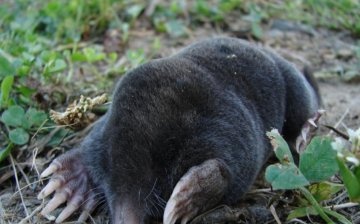
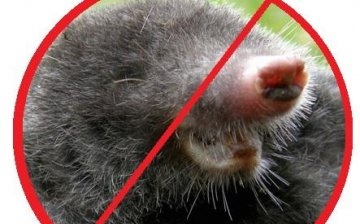











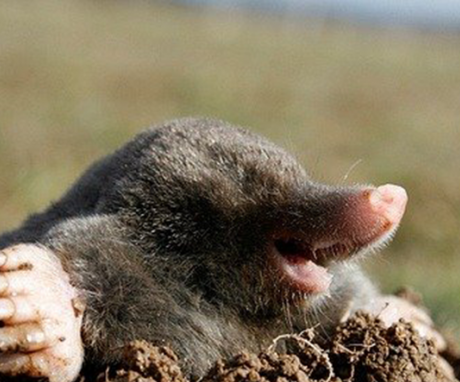

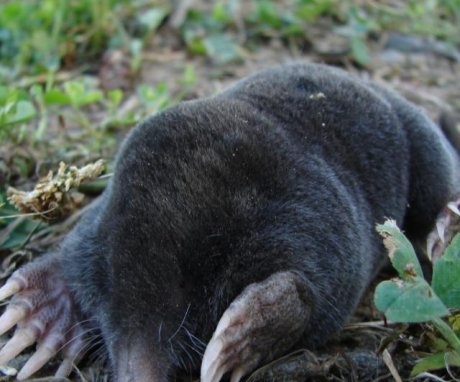
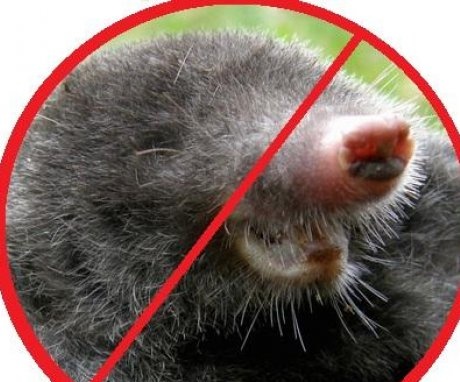
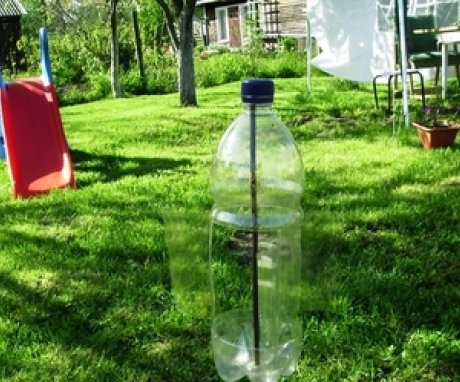
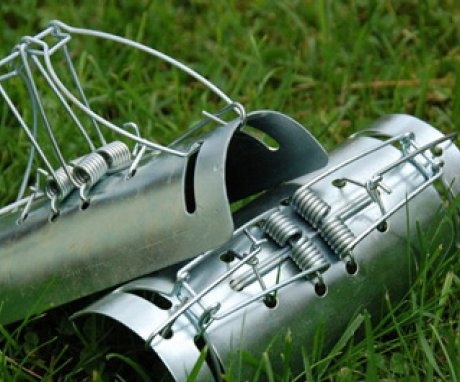

Almost everyone who has a vegetable garden is faced with such a problem as moles. It is impossible to get rid of them. My friend puts nets all over the garden, but somehow, mysteriously, the moles fall into this net. But I tried to put burnt plastic bottles in the passages. There are fewer moves. You can try that. Maybe someone else has experience dealing with moles?
I didn't wait for moles to occupy my garden. Moreover, some neighbors have already had such a misfortune. Sititek led ultrasonic mole scarers were installed along the perimeter of the garden, and so far we have not had any dysfunctional animals. I prefer to scare them away, it’s impossible to get them out, as I understand it.
I also think that it is better not to start the problem and solve it right away. As I understand it, are you satisfied with the work of your sititek repeller? I want to buy a similar device for myself in the spring.
We, too, only got rid of moles with a scarer, took an EcoSniper, to be honest, it was a pity to put mole traps.